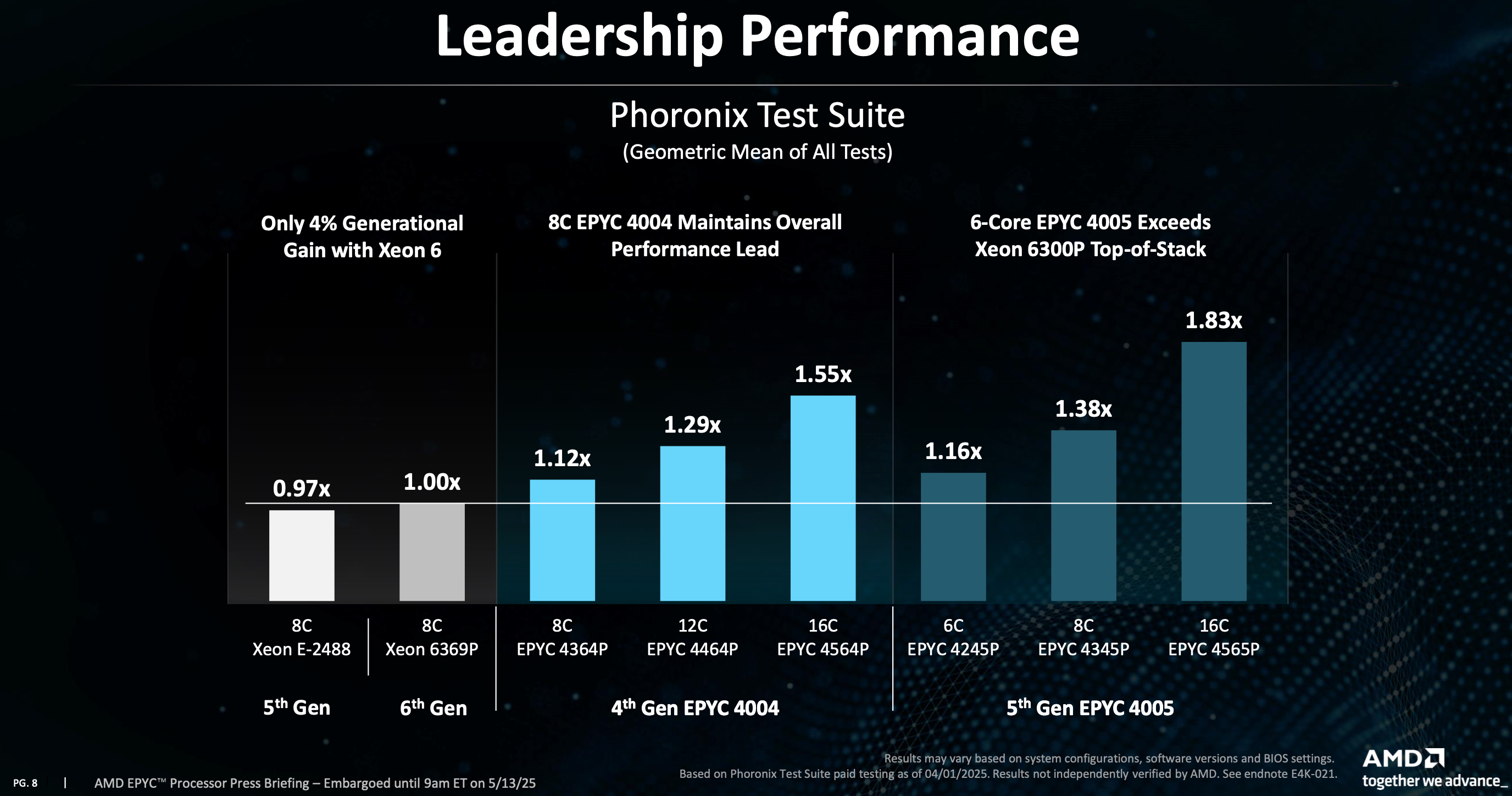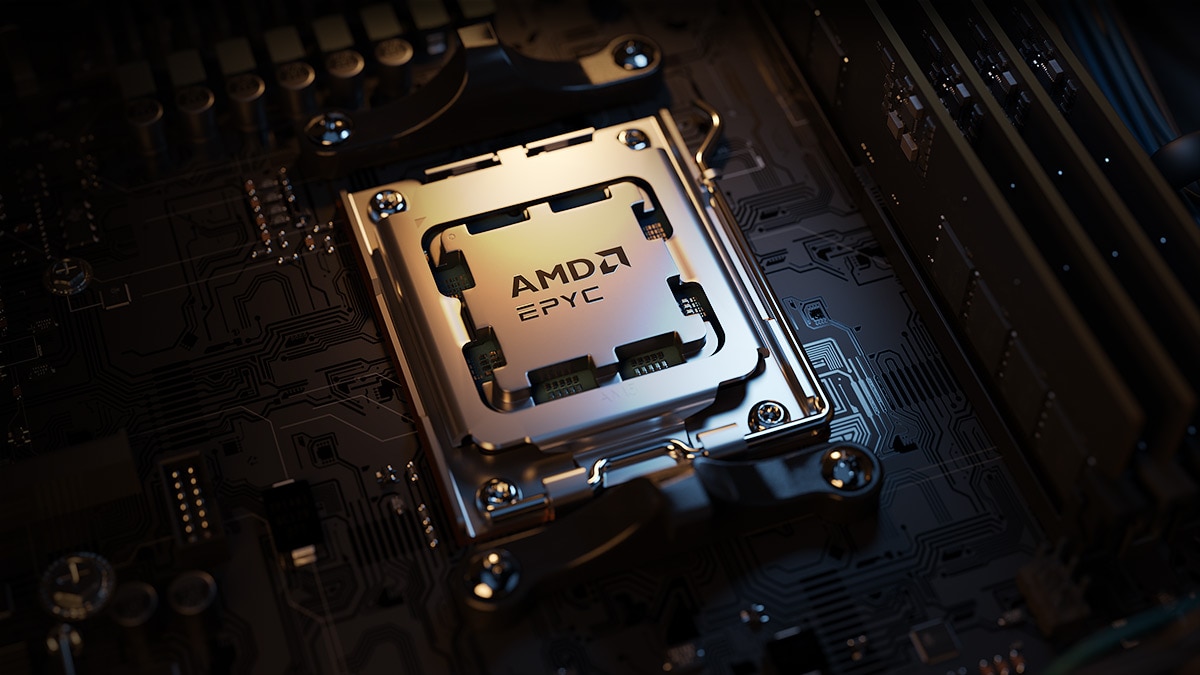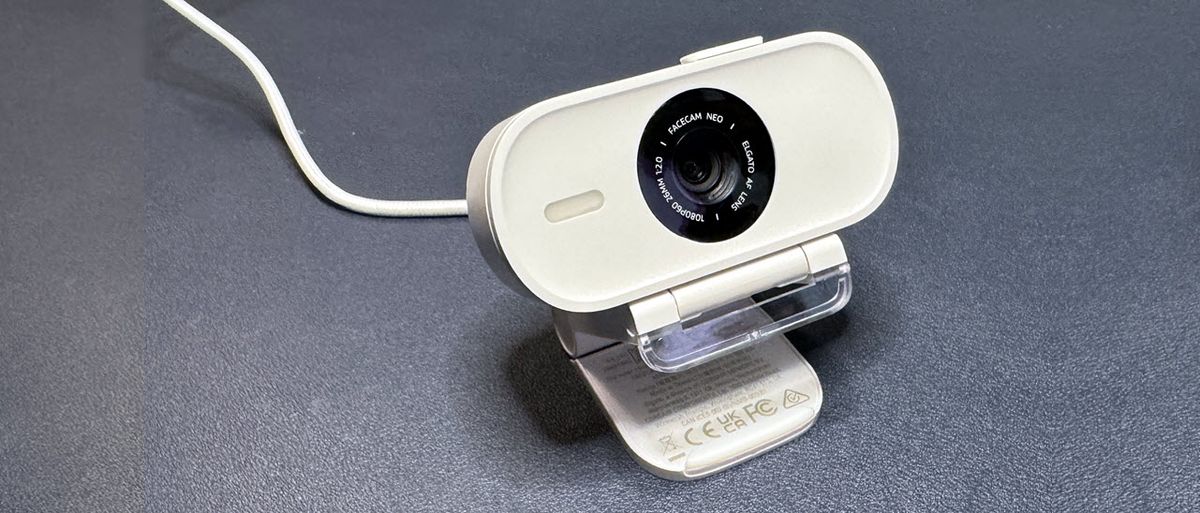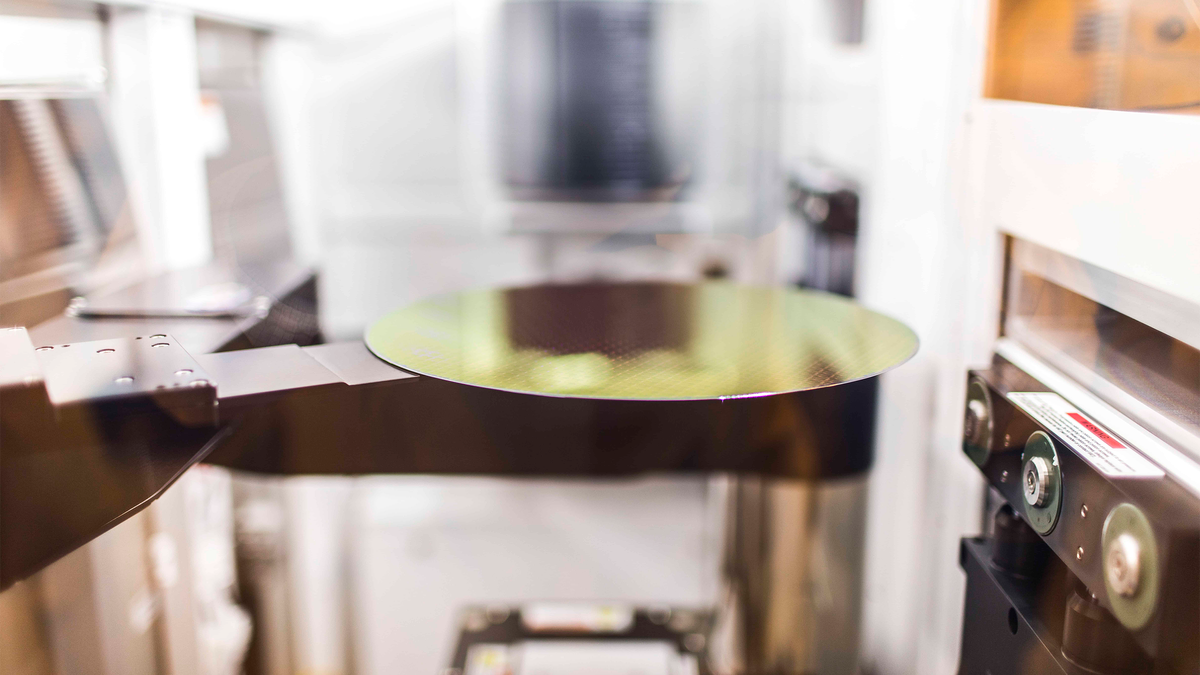AMD on Tuesday introduced its Zen 5-based EPYC 4005-series processors aimed at entry-level uniprocessor servers for small businesses, edge deployments, and hosting providers. AMD's EPYC 4005-series 'Grado' CPUs come in an AM5 form factor and feature up to 16 cores and 32 threads in a bid to offer maximum performance within the framework of the default Windows Server 2025 license, which base price covers CPUs with up to 16 cores.
AMD's EPYC 4005-series processors resemble the company's Ryzen 9000 processors and therefore carry two eight-core Zen 5 core complex dies (CCDs) with 8 MB of L2 cache (1 MB per core) and 32 MB of unified L3 cache as well as one I/O die. In addition, the flagship EPYC 4585PX model features 64 MB of 3D V-Cache. All processors feature a dual-channel DDR5 memory controller that supports up to 192 GB of DDR5-5600 memory with ECC using two modules. As for power consumption, the CPUs are rated for 65W – 170W thermal design power, depending on the model.
Swipe to scroll horizontally
| Model | Cores/Threads | L3 Cache (MB) | Default TDP (W) | Base Frequency | Max Frequency | Price (1KU, USD) |
| EPYC 4585PX | 16/32 | 128 | 170 | 4.3 | 5.7 | $699 |
| EPYC 4565P | 16/32 | 64 | 170 | 4.3 | 5.7 | $589 |
| EPYC 4545P | 16/32 | 64 | 65 | 3 | 5.4 | $549 |
| EPYC 4465P | 12/24 | 64 | 65 | 3.4 | 5.4 | $399 |
| EPYC 4345P | 8/16 | 32 | 65 | 3.8 | 5.5 | $329 |
| EPYC 4245P | 6/12 | 32 | 65 | 3.9 | 5.4 | $239 |
When it comes to security, the new EPYC 'Grado' platform offers a dedicated processor with TrustZone compatibility and support for secure boot, TPM 2.0, and memory encryption capabilities.
Just like AMD's Ryzen 9000-series processors, EPYC 9005 processors feature 28 PCIe 5.0 lanes (four are used to connect to the chipset), software RAID 0, 1, 5, 10; DisplayPort 2.0; HDMI 2.1; USB 20G Type-C; and optional USB4.
"Growing businesses and dedicated hosters often face significant constraints around budget, complexity, and deployment timelines," said Derek Dicker, corporate vice president, Enterprise and HPC Business Group, AMD. "With the latest AMD EPYC 4005 series CPUs, we are delivering the right balance of performance, simplicity, and affordability, giving our customers and system partners the ability to deploy enterprise-class solutions that solve everyday business challenges."
AMD aims its EPYC 4005 CPUs at diverse workloads, from small businesses, branch, and storage servers to dedicated systems for tasks like video editing, code compilation, cloud gaming, and e-commerce. Essentially, EPYC 4005-series processors can be used for all performance-demanding tasks that also require robust security and extended availability.
AMD itself compares its EPYC 4005-series 'Grado' processors to Intel's Xeon E-2400 and Xeon 6300P-series CPUs that only offer up to eight cores. As a result, AMD's offerings provide tangibly higher performance across the board. Performance benchmarks conducted by AMD using the Phoronix test suite show that AMD's 16-core EPYC 4565P outperforms Intel's eight-core Xeon 6369P by a factor of 1.83. Despite the performance gap, the 4565P is priced lower at $589 compared to $606 for the Intel CPU. Other advantages include DDR5-5600 support and larger L3 cache.

In addition to Windows Server, the new CPUs are also supported by popular Linux versions, such as Ubuntu, RHEL, and SLES.
AMD says that its EPYC 4005-series processors will be available from leading server OEMs, cloud service providers, and retailers, including Altos, ASRock Rack, Gigabyte, Lenovo, MiTAC, MSI, Newegg, OVHcloud, Supermicro, and Vultr. Systems with AMD's Grado CPUs will be available in a variety of form factors to meet the requirements of diverse clientele. Pricing of the new CPUs varies from $289 to $699.
Follow Tom's Hardware on Google News to get our up-to-date news, analysis, and reviews in your feeds. Make sure to click the Follow button.

 5 months ago
86
5 months ago
86








 English (US) ·
English (US) ·